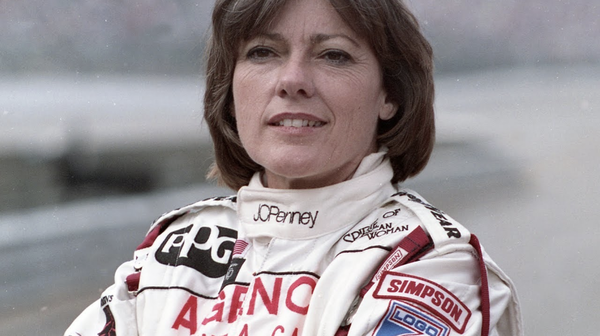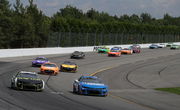

February 21, 2015- The NASCAR world was enjoying an Xfinity Series race when one crash changed everything. Kyle Busch crashed into an interior concrete wall at Daytona International Speedway, leaving him with a badly broken right leg and a broken left foot. His Toyota hit the barrier at 90 mph, generating 90 Gs of force- A force strong enough to push all the air out of the human body. “I’m thinking to myself, ‘Man, I’m done.’ There’s no way I’m going to be able to come back from this. This hurts,” he thought to himself after getting his senses back and getting rushed to the hospital. But his comeback story shows what strong willpower can achieve!
By the virtue of miracle and leaving fans astounded, Busch returned to the Sprint Cup series at Charlotte Motor Speedway on May 16, 2015. But after the severe injury, there’s no way he will win a race or risk himself, right? If you agreed with the sentiments of that question, you’ll find out why he is called NASCAR’s “Rowdy”.
Nearly 4 months after sustaining life and career-threatening injuries, Kyle Busch won the Xfinity Series race at Michigan on June 13, 2015. Goosebumps, right? However, there is another veteran with a story who explains to us what the mindset of a champion looks like- The first woman to win the Indianapolis 500 Rookie of the Year award in 1992, Lyn St. James.
ADVERTISEMENT
Article continues below this ad
Lyn St. James’ strong mindgame against setbacks
In the high-speed world of motorsports, few incidents highlight the inherent dangers as starkly as the 1986 crash at Riverside International Raceway involving Lyn St. James, Chip Robinson, and Doc Bundy. During the IMSA LA Times Grand Prix, a miscalculated maneuver led to a catastrophic three-car collision. Bundy attempted an inside pass in his Corvette, making contact with St. James’ Ford Probe, which then clipped Robinson’s Jaguar. The result was a fiery spectacle that left spectators in shock.
St. James’ vehicle flipped violently, landing upside down and bursting into flames. Recounting the harrowing experience, she said, “I had all that fuel and all that weight and of course burst into flames and upside down on pit wall and oh, yuck!” Her ability to walk away from such a wreck underscored both her resilience and the safety measures in place.
The psychological aftermath of such incidents can be profound. St. James described her return to racing shortly after the crash. “I got to go back in the probe in the backup car at Laguna… I literally see the crash all over again on my windshield in front of me.” This vivid recollection highlights the mental challenges drivers face when confronting past traumas.
Fellow racer Jimmie Johnson emphasized the unique mindset required in professional racing. “People often ask, how are race car drivers different? That’s the difference. You gotta process it, you gotta file it. It is what it is.” For motorsports professionals, whether it be NASCAR, Formula 1, Moto GP, or IndyCar, the ability to mentally compartmentalize fear is just as crucial as physical skill. Crashes are an inevitable part of racing, but what separates champions from the rest is their capacity to reset, adapt, and push forward.
View this post on Instagram
For Lyn St. James, the driving force was clear. “It’s desire. I mean, for me, it’s the desire to get back in the car. Desire overpowers everything!“ Her passion for racing not only propelled her back into the driver’s seat but also cemented her legacy as a trailblazer in motorsports. Her unwavering determination serves as a testament to the mental grit required to conquer both the physical and psychological battles of racing. However, accidents, if not anything, has taught motorsports to ensure driver safety. And, one loss which brought about these changes was dearest of all to the sport.
ADVERTISEMENT
Article continues below this ad
Trending
Lessons learned from tragedy shaping NASCAR safety
The most pivotal moments came in 2001 with the tragic loss of Dale Earnhardt at the Daytona 500. His fatal crash exposed the need for head and neck restraints, leading to the mandatory use of the HANS (Head and Neck Support) device. NASCAR also introduced SAFER (Steel and Foam Energy Reduction) barriers to absorb impact forces, significantly reducing injuries in high-speed wrecks.
Additionally, Rowdy’s 2015 incident reinforced the importance of ‘SAFER’ barriers, prompting NASCAR to expand their use at all tracks. Cockpit safety improvements, including reinforced driver compartments, became a focus in car design as well.
ADVERTISEMENT
Article continues below this ad
The introduction of the Next-Gen car in 2022 brought even more advancements, particularly in impact absorption and driver protection. However, early concerns arose when drivers like Kurt Busch and Alex Bowman suffered concussions from rear-end crashes. NASCAR responded by making structural tweaks, softening the rear clip to better absorb impacts and reduce the risk of head injuries.
Safety in NASCAR is an ongoing evolution, shaped by past tragedies and near-misses. Every crash, every injury, and every survivor’s story contributes to making the sport safer. As technology and research continue to advance, NASCAR remains committed to protecting its drivers while preserving the thrill that defines the sport.
ADVERTISEMENT
ADVERTISEMENT
ADVERTISEMENT
ADVERTISEMENT





